New project report: Food and Feedback: How customers of Japanese restaurants in Berlin perceive authenticity
Giulia Noll and Tony Pravemann try to explain how customers define the authenticity of a Japanese restaurant in Berlin by using reviews from the crowd-sourced local business review and social networking site Yelp and summarized their results in a project report to provide exciting insights into the customers view in Berlin’s Japanese foodscapes.
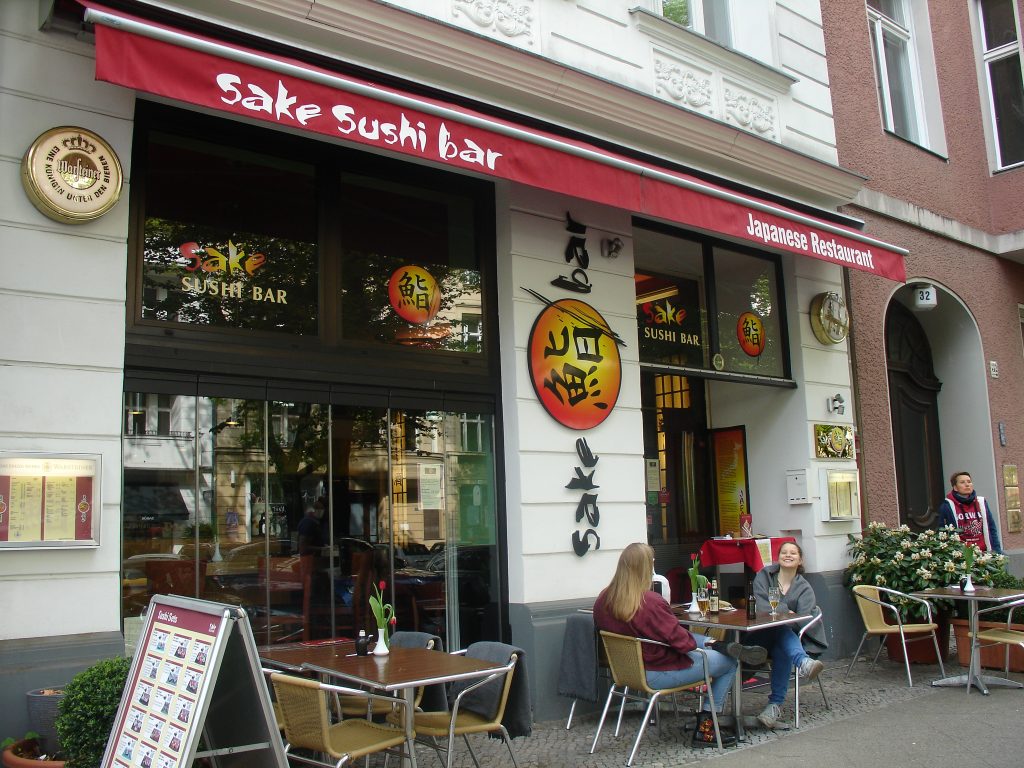
New video on authenticity in Japanese restaurants in Berlin
Irina Chernysheva, Sungmi Kim, Tim Pantenburg and Antonia Vesting conducted interviews in two Japanese restaurants in Berlin and analyzed food entrepreneurs’ concepts of authenticity. Their video project presents their results, introduces the two restaurants and provides exciting insights into Berlin’s Japanese foodscapes.
New video on Japanese restaurants in Berlin during the COVID-19 pandemic
Introduction to the Video “Korona kuruna”
by Torben von Borstel and Frank Tu (Ngo Tu Thanh)
In our project, we asked owners and staff at Japanese restaurants in Berlin about their experiences with Covid-19 during and after the second lockdown from November 2020 to Mai 2021. Japanese restaurants in Berlin are quite diverse. While you can find Japanese restaurants everywhere in Berlin many are located in Charlottenburg, which is the reason why we focused on that area. With regard to the ethnicity of owners, the three biggest ethnic groups are probably Vietnamese, Japanese and Germans. We interviewed one owner or staff member from each of the three groups to get more diverse and hopefully interesting answers. Our original goal was to interview the owners, but we could get only talk to the owner of Japanese restaurant owned by Vietnamese. At the Japanese and German owned restaurants, we interviewed waitresses.
We found out that the Vietnamese owner and the Japanese waitress were satisfied with the Covid-19 regulations and state support and found them appropriate. The waitress at the German owned restaurant on the other hand was dissatisfied with the restrictions, because it made working much harder for her.
The first onsite interview this year at Tsukushiya
After conducting online interviews for a year now, I was very happy to be able to go to a Japanese restaurant in Berlin to conduct an interview. I met with Kazuko and Niels at Tsukushiya. Kazuko is the chef and Niels the owner and manager of this Japanese restaurant that offers Japanese home-style food (katei ryōri). This includes for example okonomiyaki, donburi, curry rice and karaage. Kazuko came to Berlin in 2016 and Tsukushiya opened in February 2017.
I first spoke to Kazuko in Japanese for about an hour before Niels joined us and the interview continued in German. We touched upon several issues that came up in interviews with other restaurateurs and chefs during the past years as well, particularly vegan and vegetarian variations of Japanese food and the impact of the Covid-19 pandemic. When we met, Tsukushiya had just reopened for outdoor dining two weeks ago. The restaurants in the street received an extra permission to put more tables and chairs outside in spots that are usually designated parking lots.
Kazuko and Niels both confirmed what we have heard from other Japanese food entrepreneurs and food workers in Berlin before. Despite the economic difficulties, the pandemic enabled them to have more time for themselves. Before the Covid-19 pandemic, the restaurant opened at noon and in the evenings with only one day off during the week. During the first lockdown in spring 2020, they had offered takeout and the summer business in 2020 went surprisingly well, but during the second lockdown from November, they closed their restaurant until March. After the reopening in May, they decided to just open in the evenings and changed their menu to less laborious dishes. Both are very happy that customers have returned and view the future with optimism.

Ethnographic “Schnitzeljagd”: Observing at Japanese restaurants
by Sungmi Kim, Ngo Tu Thanh (Frank Tu), Tim Pantenburg and Antonia Vesting*
On Friday June 11, an especially hot day, we went to three Japanese eateries located around Kantstraße in Berlin Charlottenburg. Our general assignment was to observe the restaurants, talk to either customers or staff, take notes and pictures, and buy some food to try. We also had to hand in our field notes afterwards.

Enjoying food in front of a Japanese bakery (Copyright © Frank Tu 2021)
While observing we had to pay attention to many things. Quickly drawing maps or pictures can be a challenge especially to novel researchers. This is also true for taking pictures of the locations. Other customers or staff could get in the way and it is better to ask first before taking photos. By doing so, we realized that most people were rather kind and gave their permission. For our future projects on Japanese restaurants, it will be important to take enough time and to go to the location at different weekdays and times of the day. We also learned that participant observation can be a good way to obtain information that we otherwise would not get from interviews easily. In particular, among the three places we visited, at one place card payments was not accepted. Based on this observation, we wondered how payment options may affect the number of customers.

Decoration outside of a Japanese restaurant (Copyright © Antonia Vesting 2021)
It was interesting to observe how restaurateurs presented the food and other information and how the restaurants were decorated. For example, in Korean restaurants the names of the food are usually written both, in Korean and in German, but the three Japanese restaurants we visited, offered only menus written in rōmaji. To decorate the menu, at one place hand-drawn cartoons were used. At another restaurant there was a big puppet with the menu around the neck, it’s face decorated with the Japanese letters.
We also paid attention to the kitchens and their respective menus. For example, Kame is mainly be a bakery, but it was interesting that they have added things like karaage to their menu. A small look at their kitchen in the back revealed that they don’t make use of many automated tasks and most dishes seemed to be handmade. We had the impression that adding new dishes to the menu seems to be easy and that owners and customers alike are very flexible when trying new things.

One eatery only offers take-out food (Copyright © Tim Pantenburg 2021)
By visiting the restaurants, we were also able to collect information about the impact of the COVID-19 pandemic on Japanese restaurateurs. On the one hand, the owner of one eatery told us that his place did not suffer much from the pandemic, since it exclusively offers takeaway options and that he had already used delivery services before the pandemic. Therefore, there was not much to change. During Berlin’s two lockdowns, the income had even increased slightly. On the other hand, an employee at one of the other restaurants stated that they did not have many customers during the lockdown.

Impressions of a Japanese bakery (Copyright © Sungmi Kim 2021)
We hope we could give some insights on how Japanese restaurants in Berlin operate and present their uniqueness and what kind of data field research can bring to the table.
*Sungmi Kim, Tim Pantenburg and Antonia Vesting are students at Freie Universität Berlin’s Japanese Studies MA Program. Ngo Tu Thanh (Frank Tu) is a research assistant in the research project “Urban-rural migration and rural revitalization in Japan” at Freie Universität Berlin.
Participant observation: A short exercise
by Giulia Noll and Tony Pravemann*
Last week, our class was divided into multiple groups and sent to Berlin-Charlottenburg in order to put into practice the things we had learned about participant observation. The general goal of participant observation is often seen as getting to know a certain community or group of people by spending extended amounts of time with them and partaking in their activities. In contrast to interviewing, participant observation is all about getting to know people over a longer time span and being able to confirm whether their actions correspond to statements they might have previously made. Naturally, other topics are covered in our methods class as well so instead of spending a year or longer observing, we were given the task to walk down Kantstraße and observe a number of different restaurants. Charlottenburg is well known in Berlin as a thriving hub for many Asian and/or Japanese restaurants and could therefore serve as a solid practice environment.
Our group was assigned with three different tasks in total, which consisted of describing each of the restaurants, talking to the people working there and placing an order ourselves. Up to this point, none of us had any experience when it comes to participant observation and so our group started out slightly reserved when it came to approaching restaurant clerks to ask them about their respective stories and experiences working there. We visited three different restaurants over the course of the afternoon, however, we could not enter all of them due to Covid-19 regulations.

Gathering first hand experiences at Shiso Burger (copyright © Tony Pravemann 2021)
We took a closer look at the restaurants Shiso Burger, Udagawa and XXX Ramen. Shiso Burger and Udagawa have their restaurant names written in katakana and kanji which make them look quite Japanese. However, after talking to the staff of the restaurants, we found that the burger shop and the ramen shop are merely inspired by Japan. In fact, they are owned by non-Japanese and the exterior as well as the interior is simple and modern as in a lot of other restaurants in Berlin. The menu includes not only Japanese but other Asian dishes as well. On the contrary, Udagawa seems to be more on the Japanese side as it offers a full Japanese menu and features a more traditional interior. Unfortunately, we did not have the chance to talk with the staff due to the measures against Covid-19. The different Covid-19 measures were another interesting aspect we could observe. While Shiso Burger and XXX Ramen only asked for registration with the Luca app, Udagawa emphasized safety and hygiene measures by displaying several signs.

A Japanese restaurant at Kantstraße
(copyright © Tony Pravemann 2021)
From our experience, we conclude that participant observation can be a helpful method to discover things that one will not find out by interviews for example. Finally, we would like to say that observing different Japanese/Asian restaurants in Berlin was not only a great opportunity to practice this research method, but also a welcome change after months of online classes.
*Giulia Noll and Tony Pravemann are students at Freie Universität Berlin’s Japanese Studies MA Program.
Observation through closed doors
by Torben von Borstel and Irina Chernysheva*
On June 11, we walked around S-Bahn Station Savignyplatz to explore Japanese restaurants in the neighborhood. We were assigned to observe six restaurants. Unfortunately, four of them were closed. Although there was much more to observe in the two restaurants that were open, we could even learn a lot from visiting the closed restaurants.

Sachiko Sushi, photo © by I. Chernysheva
The first restaurant we wanted was closed. All that we could do was to take photos of its display window. We had a little more luck with the second restaurant. It was also closed, but two staff members and their friends were there. We had the chance to talk to them and to look at the menu. The restaurant’s specialty is deep-fried vegetables, meat or seafood on a bamboo-stick. One of the staff members told us that in the current situation it is only possible to dine outside and a reservation beforehand is necessary. The third restaurant we went to offers takoyaki and other Japanese homestyle food. It was also closed, but fortunately one staff member was there, waiting for a technician and we managed to have a conversation with him. He told us that the takoyaki machine was broken and the restaurant was closed for this reason, but would reopen in July.
The next restaurant on our route was the first one that was actually open. It is located on a noisy street with a narrow sidewalk and there were many guests sitting outside. The building where it is located, however, was under construction. This considerably complicated observation. The next restaurant on our list was also closed. It looked very unusual from the outside for a Japanese restaurant. Because of the mirrored windows, it was impossible to take the slightest look inside. We took photos of the restaurant’s front, including Corona announcements and the menu. The last restaurant on our way fortunately was open. We dropped by to buy refreshments before heading to our meeting at Savignyplatz. While we were waiting for our orders, we could observe the surroundings and the menu more closely. In contrast to the restaurants we had visited before, this location also offers dishes from Chinese and Korean cuisine.

Announcements and Menu on the Ryotei 893 window, photo © by T. von Borstel
All in all, this ethnographic walk was fun. And we have certainly learned the lesson, that before actually going to restaurants for participant observation, it is well worth to check the opening hours and think about what time might be the most appropriate for a visit. In addition, this exercise was also a nice opportunity to meet in person with our fellow students.
*Torben von Borstel and Irina Chernysheva are students at Freie Universität Berlin’s Japanese Studies MA Program.
Ethnographic walk on Kantstraße: Exploring Japanese restaurants
In the past years, participants of this method course have visited Japanese restaurants to practice participant observation as customers. This year, however, due to the Covid-19 pandemic, indoor dining in restaurants was just permitted very recently and only few Japanese restaurateurs reopened their eateries for indoor dining. While for outdoor dining a negative Covid-19 test result is not required anymore, it is still mandatory for indoor dining. Therefore, there is much more going on outside of restaurants where people can enjoy food, but only together with members of one more household.
Because of these restrictions, I decided to assign an ethnographic walk to practice observation skills instead of a joint restaurant visit this year. I divided students into three groups and set a different walking route for each team around Kantstraße in Charlottenburg. This area is not only famous for its Asian shops and restaurants, but is also the place where the first two Japanese restaurants in Germany opened before World War II (Möhring 2018, 36). Today, there exists a small cluster of 15 Japanese restaurants around Kantstraße, most of them with Japanese or Vietnamese ownership.

All teams were assigned to walk the area and visit different restaurants. As a broader research question, all teams were to observe how Japanese restaurants respond to the Covid-19 pandemic. In order to answer this question, they were supposed to take field notes and pictures, describe the restaurants, menus, customers as well as staff and start at least one conversation with customers or staff. I also asked them to buy some food and to describe its taste, arrangement and ingredients.
After the 90 minutes walk, I met each group at Savignyplatz to discuss their experiences, impressions and possible difficulties. Students reported very interesting insights and encounters. They will write their own blog posts about their results and experiences. They have enjoyed the ethnographic walk very much and I am looking forward to see more field notes and pictures and to discuss the merits of participant observation in class.
Reference:
Möhring, Maren (2018): Von Schwalbennestern und neuen Fingerfertigkeiten. Globalisierung und esskulturelle Transfers am Beispiel asiatischer Küchen in Deutschland. In: Jahrbuch für Kulinaristik 2, pp. 31-51.
Online-interview with a Japanese pastry chef
To get some more interview practice in Japanese, we invited another Japanese food entrepreneur for an online interview. Shin is a pastry chef and in 2016, founded a café in Berlin. He sells Japanese-French fusion cakes and tartlets, matcha latte and, during the summer, matcha ice. During the interview, students asked about his café, his products and work and about his impression of Berlin’s Japanese foodscapes. In the end, we also inquired about his experiences during the Covid-19 pandemic.

The interview went smooth due to students’ great questions and Shin’s willingness to share insights about his life in Berlin and his work. Although the pandemic had a negative impact on his business, he also enjoyed some time for himself due to a reduced workload. He said it was no problem to switch to takeout service, because cake can be taken home easily. He didn’t only receive financial support from the federal government and from Berlin’s federal state government, but his regular customers stopped by during the pandemic and bought cake to support him as well. While it was rough at times, he wanted to keep his café open for his customers. In November 2020, there were only very few customers coming on weekdays, so he decided to only open on weekends. With the relaxed Covid restrictions, customers slowly return for enjoying matcha latte and cake at the café’s terrace. Instead of meeting Shin online, next time, we’ll go there and have some of his delicious cake ourselves.

Pastries and sweets from Shin’s Café (Copyright © Shin Komine)
Students’ interview with Akiko
After the first online interviews with students from Seikei University, we had the opportunity to conduct an interview about Berlin’s Japanese foodscapes offline. Due to the relaxed Covid-19 regulations we met outside for a picnic with Akiko. Because only members from a limited number of households were allowed to meet, I divided the class into two groups. Akiko brought vegan obentō, so students could enjoy food while interviewing her.

Akiko runs a catering business that is specialized in vegetarian and vegan food. Due to the Covid-19 pandemic, her business was disrupted and she now receives support from the German employment agency to make a living. She offers lunchboxes, cookies and preservable food like miso and kimchi, for example and keeps in touch with her customers via a mailing list and social media. Students were eager to hear why she came to Berlin, how her business went before the pandemic and how she copes with the Covid-19 induced changes. We had interviewed Akiko a year ago and in June 2020 she was grateful for the German Soforthilfe (financial support) and rather optimistic. But the catering business has not recovered yet, since joint business lunches, private parties and gallery openings are impossible.

Students had prepared questions for the interview with Akiko by checking her website and took turns in asking questions. Outdoor interviewing posed some challenges for interview recording and eating, talking and taking notes at the same time was quite difficult. However, doing interviews face to face and eating the food the research participant had prepared offered more opportunities to ask questions students had not thought about before. While online interviews are a great option to overcome the limitations caused by the pandemic, by meeting in real life all participants created a much more relaxed atmosphere without technical problems. Our picnic also provided the first chance to meet for the students who have so far only met in online classes.

Interview session with students from Freie Universität Berlin
by Terumi*
I enjoyed the interview session very much. Even though all of us felt nervous for the first few minutes, I could regain my composure during the icebreaking. We chatted about places in Japan we know well (e.g, Kyoto, Itabashi, etc.).
After the icebreaking, we talked about my own experiences of Japan under the pandemic. The interviewers asked me how the state of emergency has affected my life. We discussed many topics: the coronavirus and various changes it has brought to us, the slow return to normality, and our perceptions of these changes. Throughout the interview, special focus was placed upon our eating habits during this period, I was able to elaborate my own experiences, and felt extremely lively being able to talk so openly and naturally with someone I met for the first time.
It was nice to exchange our thoughts on, and to share our hardships under, this pandemic-related situation across the countries via Zoom. I hope that the interviewers will be able to make use of my comments for their research project.
* Terumi is a student at Seikei University

Students from Seikei University in their hybrid classroom
(Copyright © Yoko Kawamura 2021)
Interviews with students from Seikei University
By Antonia Vesting and Tony Pravemann*
Three weeks ago, our course had the opportunity to conduct online interviews with students from Seikei University. When it comes to social science research, interviews are often seen as a central method for conducting qualitative research. However, especially as an undergraduate, very few students are able to gain hands-on interview experience.
With our respective groups, we first spent some time drafting initial interview questions and thinking about general ideas for our conversations with the Japanese students. We also emailed our respective interviewee and made an appointment for the online interview. Professor Reiher had assigned three general topics for the interviews: 1) changes to our interview partner’s daily life due to the Covid-19 pandemic, 2) changes with regard to their food practices and 3) the situation of restaurants in Japan during the pandemic. Aside from that, all groups were given complete freedom when it comes to the questions and conducting the interviews. Therefore, every group approached the topic from a slightly different angle. A common problem for us that came up during preparation was estimating how many questions we could ask during one interview of approximately 30-60 minutes.
What did we learn from this experience? Every interview is unique. We realized that one can hardly ask every question in the order one has prepared beforehand. That is because it would disturb the flow of the interviews. The interviewer must take into consideration that questions might become irrelevant, or he/she has to adjust them according to the context. It might also be necessary to develop new questions on the spot to keep up the flow, to react to the interviewees answers or to further elaborate on a certain topic. It is therefore very important to stay flexible and listen closely to what the interviewee has to say. It is better to go with the flow, because most of the time it is not possible to foresee the whole interview situation and tailor specific questions beforehand. We found writing down major questions that guide one through the interview very helpful, but everything else depended on chance, good luck and skills.

This year’s participants in the method course at Freie Universität Berlin
We also realized that it is not easy to conduct an interview and to simultaneously jot down notes. This is a skill that needs further practice. Fortunately, we will have the chance to interview more people during the next weeks. Furthermore, the special situation of conducting interviews online should be mentioned. It is a great opportunity to be able to conduct interviews online with people living 9000 kilometers away. But bad sound quality, unreliable WiFi and confusing appointments because of time differences are some of the problems we had to face.
Finally, we would like to extend a warm thank you to all the participating Seikei University students and to Professor Yoko Kawamura for giving us the opportunity to have interesting conversations and to learn about conducting interviews as part of social science research.
*Tony Pravemann and Antonia Vesting are students at Freie Universität Berlin’s Japanese Studies MA Program.
Behind the scenes: Finding interview partners for the method course during the Covid-19 pandemic
by Furkan Kemik*
It has been more than a year since the beginning of the pandemic and almost a year since we conducted our first online interviews with various Japanese restaurateurs in Berlin for this project on research methods and Berlin’s Japanese foodscapes. Despite the unusual circumstances during the Covid-19 pandemic, in 2020, Japanese food entrepreneurs were highly interested in talking to our students online. The online interviews provided us with many valuable insights into Japanese gastronomy in Berlin during the pandemic.
This year, however, it was not as easy to find interview partners for the method course. I think this is due to the current situation and several changes since the beginning of the pandemic and the first lockdown in March 2020. At a first glance, the latest developments sound promising. Outdoor dining has been possible again for a few weeks now and due to the decreasing cases of Covid-19 infections and the increasing number of vaccinated people, further relaxing Covid-19 measures is planned for the coming weeks. Is “normality” returning?

Outside the Japanese bakery Kame (Copyright © Maritchu Durand June 2021)
Of course, it is not that easy. Our everyday lives have been affected so greatly in many ways, that we can hardly go back to what was “normal” before the pandemic. This is true for Japanese restaurateurs in Berlin as well and this is the main reason why the search for interview partners has been so challenging this year. The fact that restaurateurs have suffered many setbacks the past year and had to adapt to two lockdowns has already been examined in more detail in previous blog entries. Adapting, however, has not been easy for everyone, if anyone at all. Not only did temporary closures for weeks and sometimes months in some places become the norm, some restaurants and companies even had to cease operations completely. The existence of many restaurants has been hanging by a thread and without financial aid and the so-called Kurzarbeitergeld, our culinary landscape would look even more depressing today.

Interior of the Japanese restaurant 893 Ryōtei (Copyright © Maritchu Durand 2020)
Considering the situation of the gastronomy during the pandemic, it is quite easy to understand that the ongoing existential pressure worried almost everyone. This was especially clear after email exchanges and a quick glance at the restaurants’ websites on social media platforms. While some restaurateurs wouldn’t agree to interviews, because they were too busy keeping the restaurant up and running operations with way less employees while also managing their pick-up and delivery service, others were too frustrated with the overall situation. However, these difficulties to find interview partners during the pandemic and the many phone calls, emails and social media accounts also provided us with a rather personal insight on what it means to be a restaurateur during the pandemic.
* Furkan Kemik is student assistant at FUB and supports the method course, the research project on Berlin’s Japanese Foodscapes and this blog. I cannot thank him enough for his great work during the past year.
Berlin’s Japanese foodscapes during the Covid-19 pandemic: Interview with Japanese pastry chef Chie
Recently, the number of Covid-19 infections in Berlin has dropped significantly and more and more people are getting vaccinated. After more than five months, restaurants in Berlin reopened their open air seating for guests with a negative corona test result no older than 24 hours. From June 4, customers without a test can use the outdoor dining facilities and indoor dining will reopen for tested and vaccinated customers. The beautiful weather will guarantee crowded beer gardens and cafés.
Since last spring, we have interviewed Japanese restaurateurs, chefs and food workers in Berlin to ask them about their experiences during the two lockdowns since March 2020. This week I had the chance to talk to Chie who is a pastry chef. She moved to Berlin in 2012 and since then has worked in different Japanese restaurants were she was mostly responsible for desserts and pastry. She creates matcha tiramisu, mochi and other delicious sweets. For several years, she has been working in an Italien pastry shop and also continued her work for Japanese restaurants and catering activities.
Throughout the pandemic, the pastry shop Chie works for remained open for takeout. In Summer 2020 and before the second lockdown that began in November, they also received some catering orders again. Chie worked reduced hours, but didn’t experience great financial loss due to Kurzarbeitergeld (short-term work allowance) and a generous boss. She said she didn’t need much money during the pandemic, because she usually spends it on travel and dining out. Both was impossible during the last year.
One thing Chie is looking forward to when restaurants reopen is to create Japanese desserts again for Japanese restaurants. Although many Japanese restaurants offered takeout services during the pandemic, they didn’t sell desserts to go. Remembering Chie’s great desserts and pastries sold in Japanese restaurants in the past, we can’t wait for the full reopening of Japanese restaurants in Berlin and to enjoy yuzu tiramisu again!

Chie during our online interview and two of her creations: matcha roll and yuzu tiramisu
Research project „Berlin’s Japanese foodscapes“ in 2021: now in English
The sixth season of the participatory research project/method course „Berlin’s Japanese foodscapes” is on and taught in English for the first time. In summer 2021, 10 students from FUB’s Japanese Studies MA program will conduct new and exciting projects on Japanese food in Berlin to get some experience with qualitative research methods. Due to the ongoing Covid-19 pandemic, there will be methodological challenges to face, but just like last year, we will be flexible and find alternative ways to make our data.
In order to get interview praxis, we collaborate with Yoko Kawamura and her students from Seikei University in Tokyo. FUB’s students will interview Seikei students online about their lives, experiences and food consumption during the pandemic and ask them about the situation of restaurants in Tokyo. After this first Japanese language interview experience, we will prepare for interviews with Japanese food entrepreneurs and food workers in Berlin.
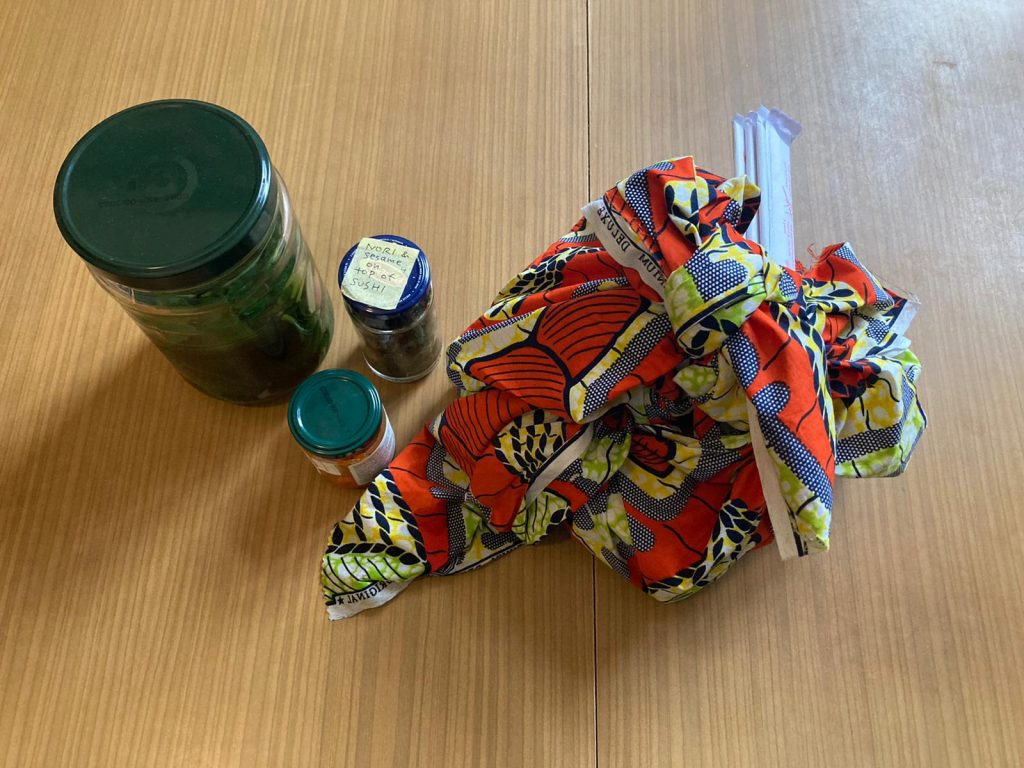
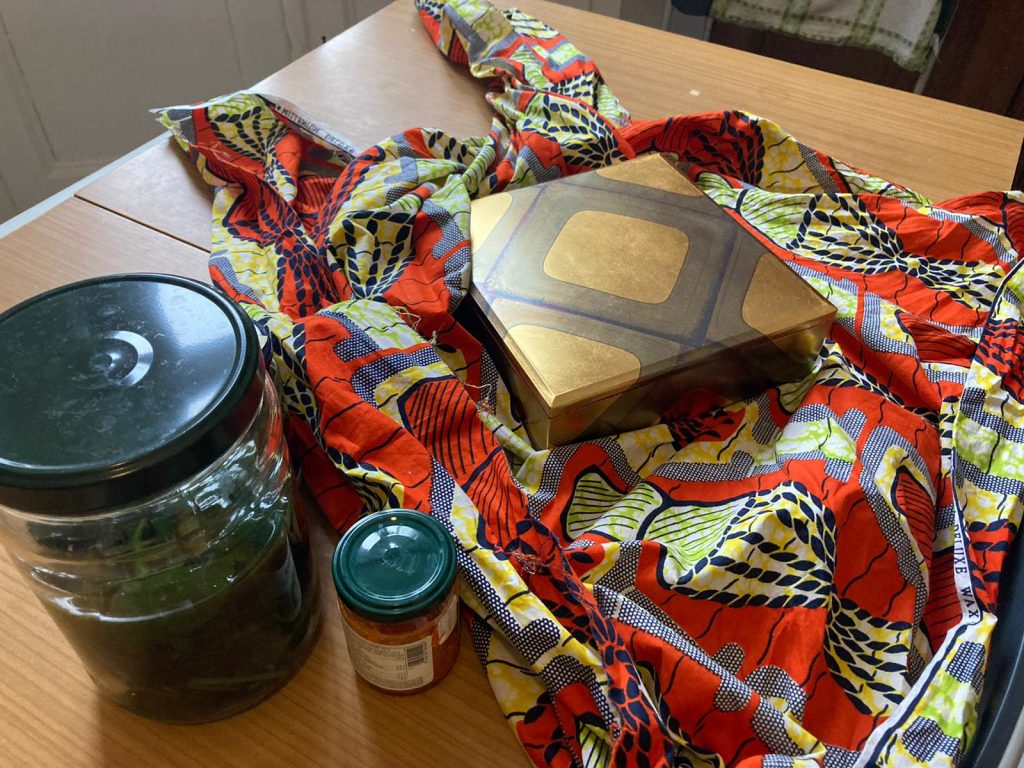
During the Covid pandemic, many Japanese restaurants in Berlin offer delivery and take-out services. It is a nice change to the monotonous every-day life to unwrap a furoshiki and find …
Students have already formed small research teams and decided on topics to study. One project will inquire food labeling of imported Japanese food in Asian supermarkets in Berlin. Another project analyzes how Japanese restaurant owners think about Covid-19 regulations in Berlin. The third project will compare concepts of authenticity in Japanese restaurants run by food entrepreneurs with different nationalities and/or ethnic backgrounds. We are looking forward to interesting insights into Berlin’s Japanese foodscapes, exciting interviews and hopefully joint visits to restaurants once they reopen. Meanwhile we order Japanese food via delivery or make use of take-out services many Japanese restaurants in Berlin offer in order to remember the taste of Japanese food.
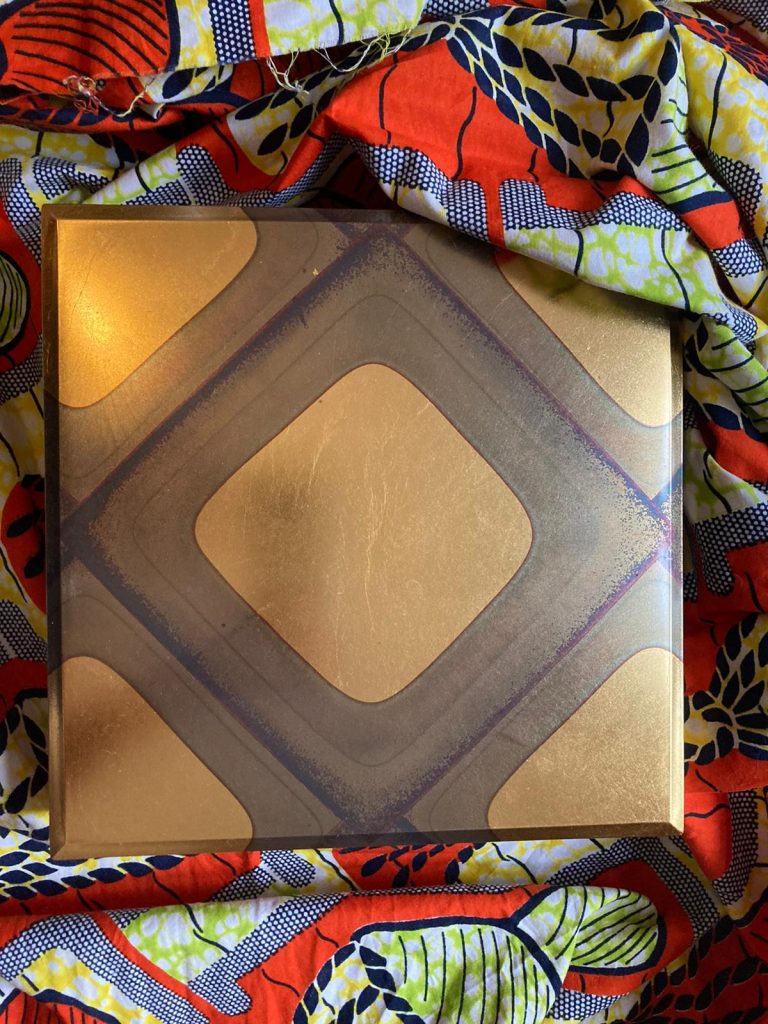
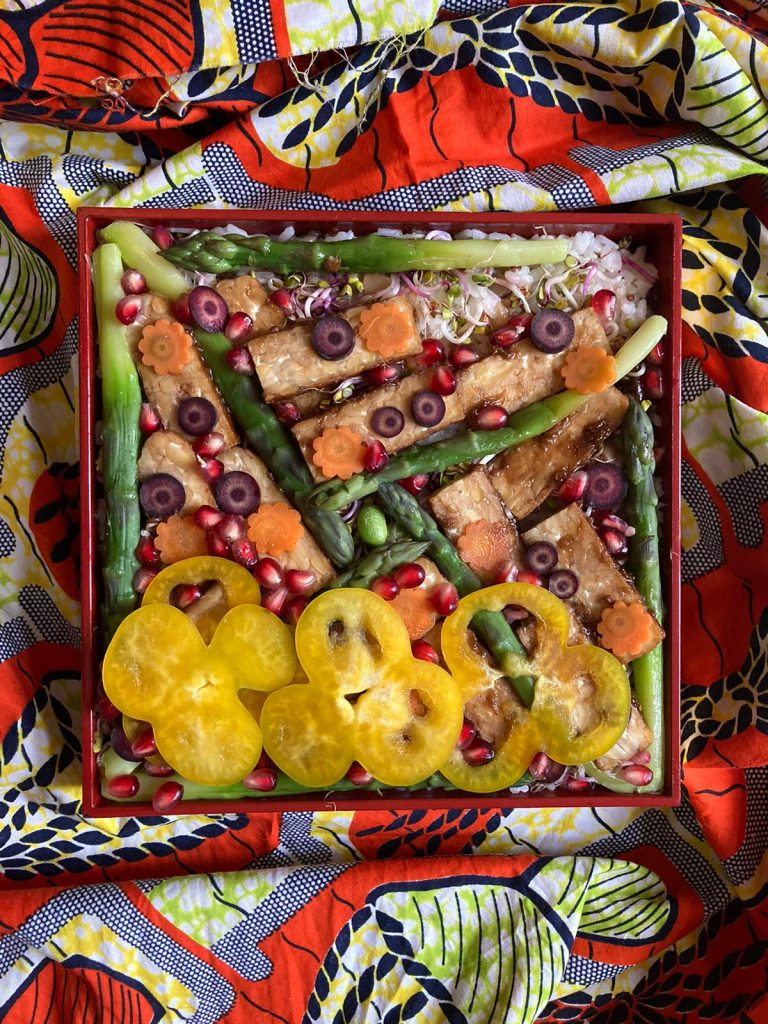
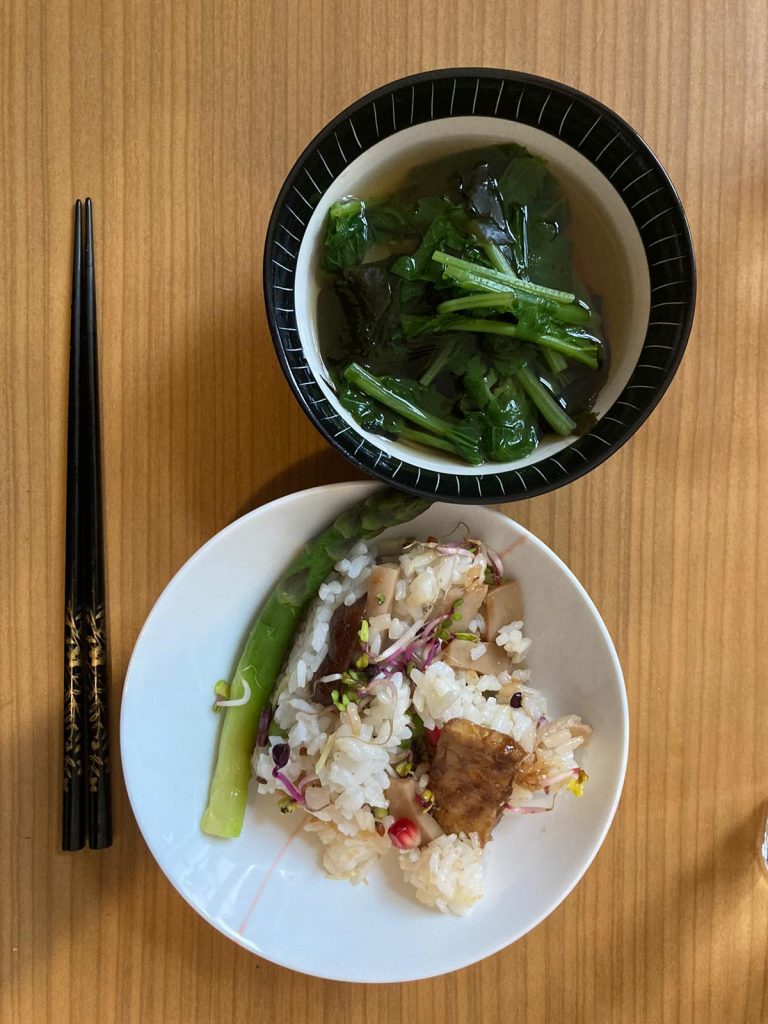
… a beautiful box filled with vegan chirashi sushi. This one was prepared by Akiko, we have interviewed last year (https://roku-berlin.com/).
Japanische Restaurants in Berlin im Lockdown 2021
Als im März 2020 alle Restaurants während des ersten Corona-Lockdowns schließen mussten, hätte niemand geahnt, dass sich diese Situation ein Jahr später fortsetzen würde. Nach einer kurzen Erholungspause im Sommer 2020, in der Restaurants wieder geöffnet waren, sind die Berliner Restaurants nunmehr seit November 2020 geschlossen. Lediglich Lieferdienste und Selbstabholung sind möglich. Die Novemberhilfen wurden schleppend ausgezahlt und viele Restaurants stehen vor dem Aus.
Dies betrifft natürlich auch die japanischen Restaurants. Von den ca. 290 japanischen Restaurants und Cafés in Berlin (eigene Zählung November 2020) boten Ende November 2020 fast 200 Restaurants Lieferdienste und/oder die Möglichkeit zur Selbstabholung an. Die restlichen Restaurants hatten geschlossen bzw. stellten online keine Informationen zur Verfügung. In den vergangenen fünf Monaten haben jedoch einige Restaurants zusätzlich auf Lieferdienst und/oder Abholservice umgestellt oder dauerhaft geschlossen. Einige Restaurants, die im ersten Lockdown im Frühjahr 2020 zu waren, haben wiederum in der Zwischenzeit einen Abholservice eingerichtet. Mitunter bieten sie diesen aber nur an einigen Tagen in der Woche an. Viele japanische Restaurants haben sich auf obentō spezialisiert, da man die japanischen Lunchboxen gut mitnehmen und aufwärmen kann.

Mitteilung über Außerhausverkauf an einem japanischen Restaurant im März 2021
In dieser ungewissen Situation beginnt das neue und dritte Onlinesemester an der FU Berlin. Die Forschungswerkstatt wird sich daher ab April 2021 wieder intensiv der Situation der japanischen Restaurants, ihrer Betreiber, Köche und Mitarbeiter*innen widmen. Ob wir im Sommersemester Gelegenheit haben, japanisch essen zu gehen und unsere Interviewpartner*innen persönlich zu treffen, ist jedoch noch ungewiss.

Hygienemaßnahmen in einem japanischen Café in Berlin
